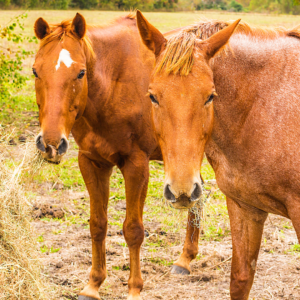 Risk Factors for Squamous vs. Glandular Ulcers in Horses. Despite being grouped together under the umbrella term “equine gastric ulcer syndrome,” one group of veterinary researchers* recently suggested that equine glandular gastric disease (EGGD) should actually be considered a distinct entity from equine squamous gastric disease (ESGD). This recommendation comes in the wake of their findings that different management and risk factors contribute to the two types of ulcers.
Risk Factors for Squamous vs. Glandular Ulcers in Horses. Despite being grouped together under the umbrella term “equine gastric ulcer syndrome,” one group of veterinary researchers* recently suggested that equine glandular gastric disease (EGGD) should actually be considered a distinct entity from equine squamous gastric disease (ESGD). This recommendation comes in the wake of their findings that different management and risk factors contribute to the two types of ulcers.
“Considering how prevalent EGGD has become, remarkably few data regarding risk factors and optimal management strategies, including feeding programs, have been designed for horses with this condition,” noted Laura Petroski-Rose, B.V.M.S., a Kentucky Equine Research veterinarian.
Squarmous vs. Glandular: Differences
Unlike squamous ulcers caused by the physical splashing of harsh stomach acids on the “higher” regions of the stomach lining, causes for ulcers in the glandular region remain unclear. One theory is simple failure of normal defense mechanisms, while another includes excess nonsteroidal anti-inflammatory drug administration. Unlike in humans and other mammalian species, Heliocobacter spp. do not appear to play a role in EGGD.
To gain a foothold on this important, performance-limiting welfare and health issue, Benjamin Sykes, an internist and adjunct associate professor at The University of Queensland, together with his colleagues from the United Kingdom and Australia, set to work. The team examined and collected management data (feeding, exercise, overall health.) They compared 109 Thoroughbreds training in eight different facilities in the U.K. and Australia. They found:
- Horses with EGGD vs. ESGD had different management factors and clinical signs of disease, as suspected;
- Exercising >5 times per week was associated with a tenfold increased risk of EGGD;
- Poor performance, or performing below expectation, was associated with an almost fourfold increased risk of EGGD;
- Horses with stereotypies were more likely to have ESGD. However, ironically, horses displaying aggression towards humans were less likely to have ESGD; and
- Individual trainer was also identified as a risk factor for EGGD.
“Indeed, these two conditions appear distinct and must therefore be managed as such. Without clear knowledge of the underlying processes contributing to EGGD development, outlining the best strategies to approach horses with EGGD remains challenging,” summarized Petroski-Rose.
That said, stress does appear to play a role in EGGD. Therefore, further exploration of stress pathways and cortisol are warranted.
Potential Management:
“Without clear insight into the underlying pathways, management of any gastric ulcer relies heavily on forage-based diets including alfalfa hay, using slow-feeders so that the horse can consume forage for most hours throughout the day, and minimizing dietary concentrates,” advised Petroski-Rose.
Contact a Kentucky Equine Research nutrition advisor once your veterinarian has confirmed the presence of gastric ulcers. Be sure to ask about RiteTrac—a supplement designed to quickly neutralize excessive gastric acid, thereby protecting the stomach lining and restoring the normal gastric environment. Horse owners in Australia should look for these research-proven products.
*Sykes, B.W., M. Bowen, J.L. Habershon-Butcher, M. Green, and G.D. Hallowell. 2019. Management factors and clinical implications of glandular and squamous gastric disease in horses. Journal of Veterinary Internal Medicine 33(1)233-240.

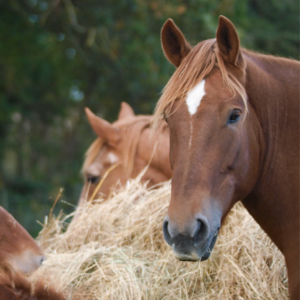 Equine Gastric Ulcer Syndrome: Dietary Management. According to the American Association of Equine Practitioners, approximately 93% of racehorses, 60% or more of performance horses, and 25-50% of foals have or have had equine gastric ulcer syndrome.
Equine Gastric Ulcer Syndrome: Dietary Management. According to the American Association of Equine Practitioners, approximately 93% of racehorses, 60% or more of performance horses, and 25-50% of foals have or have had equine gastric ulcer syndrome.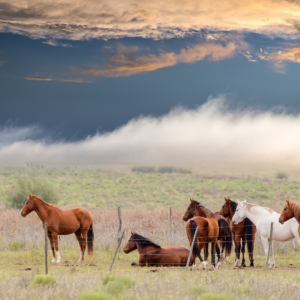 Grazing Behavior in Horses: Monitoring Full-Day Consumption. Research suggests horses graze about 16-18 hours a day if given unrestricted access to pasture. Studies on grazing behavior frequently rely on short periods of observation and data collection. Next, data is extrapolated. Lastly, conclusions are drawn for a complete 24-hour dataset.
Grazing Behavior in Horses: Monitoring Full-Day Consumption. Research suggests horses graze about 16-18 hours a day if given unrestricted access to pasture. Studies on grazing behavior frequently rely on short periods of observation and data collection. Next, data is extrapolated. Lastly, conclusions are drawn for a complete 24-hour dataset.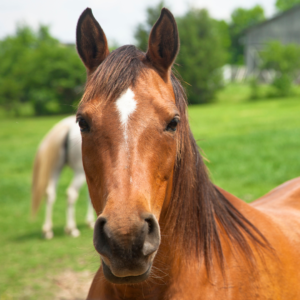 Gastric Ulcers in Horses: Facts and Fallacies. A recent web-based survey queried horse owners on their knowledge and familiarity with equine gastric ulcer syndrome (EGUS). Based on over 1,100 responses from individuals with and without direct experience with EGUS, here is a summary of what horse owners know, and perhaps more importantly, don’t know about gastric ulcers in horses.
Gastric Ulcers in Horses: Facts and Fallacies. A recent web-based survey queried horse owners on their knowledge and familiarity with equine gastric ulcer syndrome (EGUS). Based on over 1,100 responses from individuals with and without direct experience with EGUS, here is a summary of what horse owners know, and perhaps more importantly, don’t know about gastric ulcers in horses.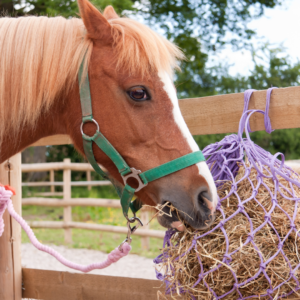 Advantages of Haynets and Hay Feeders for Horses: While forage is the most important part of a horse’s diet, circumstances arise when intake should be limited. Obese horses and ponies with metabolic conditions, for example, may need to have calorie intake controlled carefully to avoid overconsumption of energy. Limiting forage intake can mean less time spent chewing, and with this comes a reduction in saliva production and stomach-acid buffering, all of which sets the stage for gastric ulcers and possible colic.
Advantages of Haynets and Hay Feeders for Horses: While forage is the most important part of a horse’s diet, circumstances arise when intake should be limited. Obese horses and ponies with metabolic conditions, for example, may need to have calorie intake controlled carefully to avoid overconsumption of energy. Limiting forage intake can mean less time spent chewing, and with this comes a reduction in saliva production and stomach-acid buffering, all of which sets the stage for gastric ulcers and possible colic.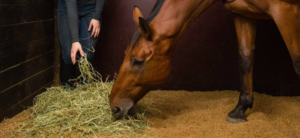 When Your Horse Refuses Hay: An Owner’s Checklist. Several issues may be at play when a horse backs off its hay. The first consideration is whether the issue lies with the horse or with the hay. To help identify the root concern, think about these questions:
When Your Horse Refuses Hay: An Owner’s Checklist. Several issues may be at play when a horse backs off its hay. The first consideration is whether the issue lies with the horse or with the hay. To help identify the root concern, think about these questions: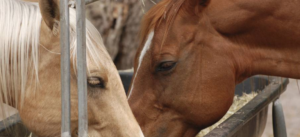 Cost-Conscious Feeding of Horses: A periodic review of your horse’s diet ensures that you’re providing the best nutrition in the most cost-effective way.
Cost-Conscious Feeding of Horses: A periodic review of your horse’s diet ensures that you’re providing the best nutrition in the most cost-effective way.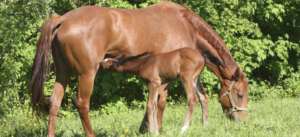 Lactation in Mares: Nutritional Notes. The nutritional requirements of broodmares peak as fetal growth surges in late gestation and as lactation commences after birth. Experts assert that lactating mares may require twice as much dietary energy as horses at maintenance, placing them in the same nutritional classification as intensely worked athletic horses. Owners of broodmares can assure optimal nutrition through provision of a well-fortified diet.
Lactation in Mares: Nutritional Notes. The nutritional requirements of broodmares peak as fetal growth surges in late gestation and as lactation commences after birth. Experts assert that lactating mares may require twice as much dietary energy as horses at maintenance, placing them in the same nutritional classification as intensely worked athletic horses. Owners of broodmares can assure optimal nutrition through provision of a well-fortified diet.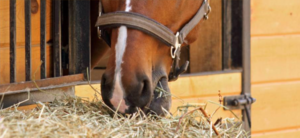 Hay: The Favorite Lunch Munch for Horses! As part of their nature, horses have a built-in desire to chew. Evolving as wandering herbivores, horses in their natural state graze off and on all day long. They spend up to 65% of their time in this activity. A stalled horse’s chewing instinct apparently remains strong even if the horse’s nutritional needs are fully met by various feed products other than hay.
Hay: The Favorite Lunch Munch for Horses! As part of their nature, horses have a built-in desire to chew. Evolving as wandering herbivores, horses in their natural state graze off and on all day long. They spend up to 65% of their time in this activity. A stalled horse’s chewing instinct apparently remains strong even if the horse’s nutritional needs are fully met by various feed products other than hay.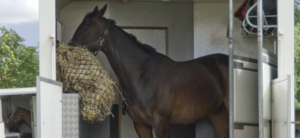 Shipping Fever in Horses: Horses that are trailered for long periods of time—more than three or four hours—are at increased risk for developing a respiratory infection commonly known as “shipping fever.” Owners who plan to transport horses can take steps before, during, and after the trip to minimize the chance of a horse developing this infection. It can easily derail training, competition, or breeding plans for several weeks.
Shipping Fever in Horses: Horses that are trailered for long periods of time—more than three or four hours—are at increased risk for developing a respiratory infection commonly known as “shipping fever.” Owners who plan to transport horses can take steps before, during, and after the trip to minimize the chance of a horse developing this infection. It can easily derail training, competition, or breeding plans for several weeks.